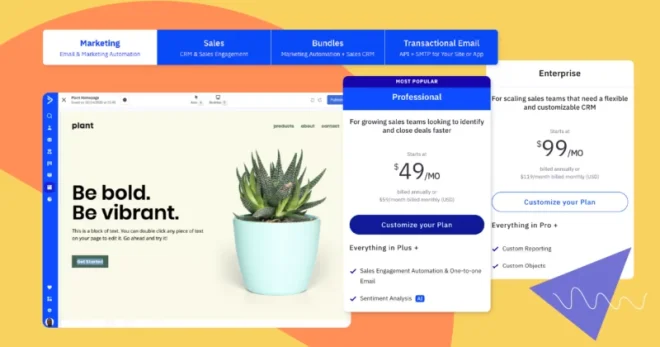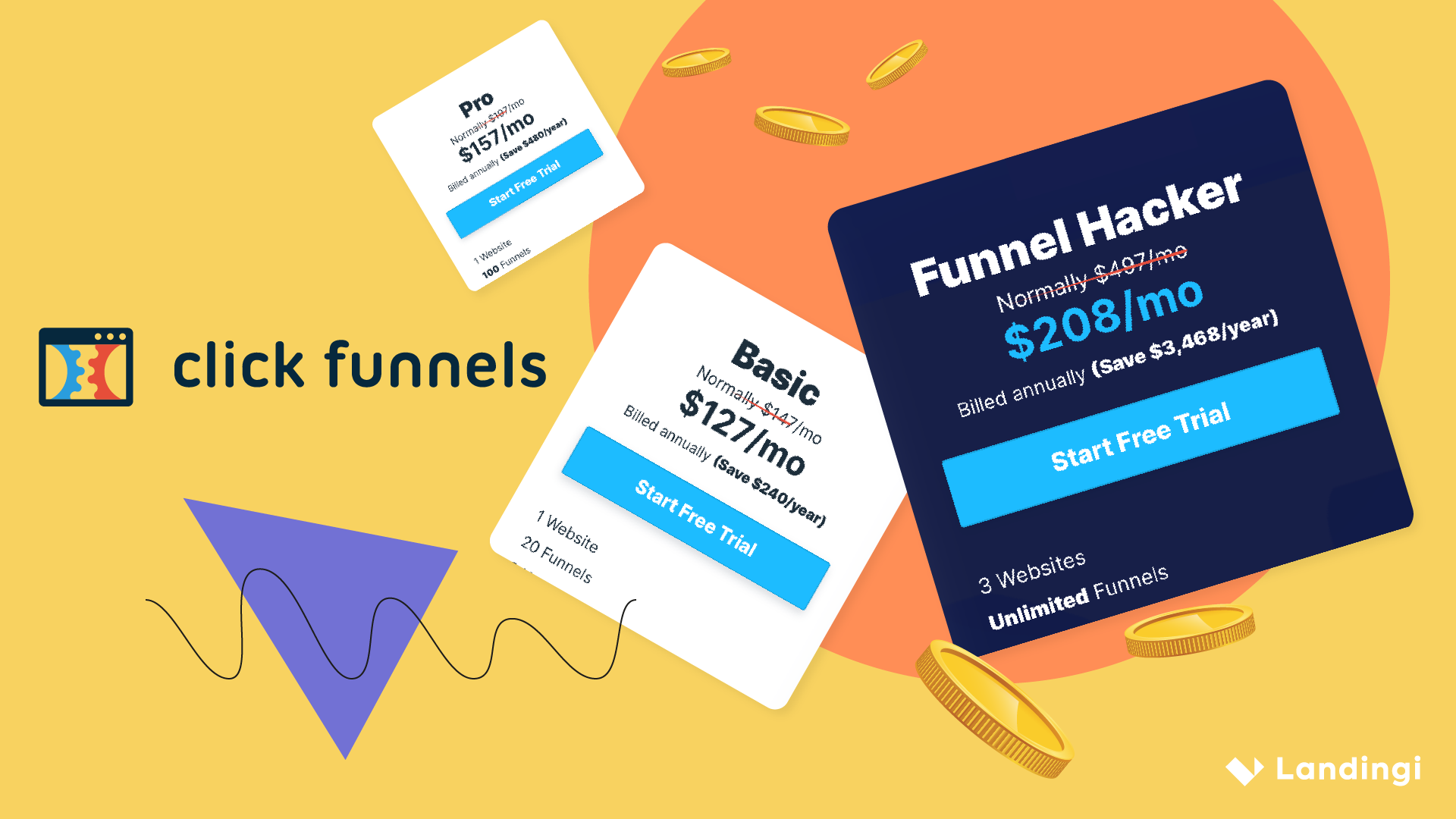What is email marketing? It’s a way of promotion that has been around for a long time now and has settled down for good in the digital marketing world.
According to MailChimp’s email marketing definition, it is “a form of direct marketing that uses email to promote your business’s products or services”.
Truth be told, it is one of the most effective methods of promoting your offer and building relationships with your leads, nurturing them, and converting them into customers.
In order to properly use email marketing, you should:
- choose the right email marketing platform,
- create an email list,
- segment audience,
- personalize emails,
- direct traffic from emails to specific offers.
Considering that:
- 58% of adults check their email first thing in the morning (according to Customer Intelligence),
- emails are 40 times more effective at acquiring customers than Facebook or Twitter (according to McKinsey),
it would be a waste not to use the power of emails in the online business world.
If you aim at getting the most out of email marketing, you need to elaborate on a spotless email marketing plan, set up goals you want to achieve and learn how to use it.
‘Emails are 40 times more effective at acquiring customers than Facebook or Twitter.’
Choosing the right email marketing platform
It may seem like a piece of cake but it’s crucial to choose the right email marketing platform, as it will have an impact on capabilities you will be able to implement.
These days, there is a significant number of email marketing platforms which makes choosing one a tough choice. Consequently, you need to know what features you should take into consideration to select the most beneficial option.
Basically, there are five aspects you should draw your attention to, such as:
- automation,
- audience segmentation,
- email personalization,
- designer and preview tools,
- pricing.
Automation
Robust automation allows you to optimize your email marketing campaigns and boost sales without making any extra effort. When choosing an email platform, you should make sure it consists of tools that will enable you to run both drip and trigger-based campaigns. It will facilitate running various campaigns (welcome, seasonal, post-purchase, abandoned cart, etc.).
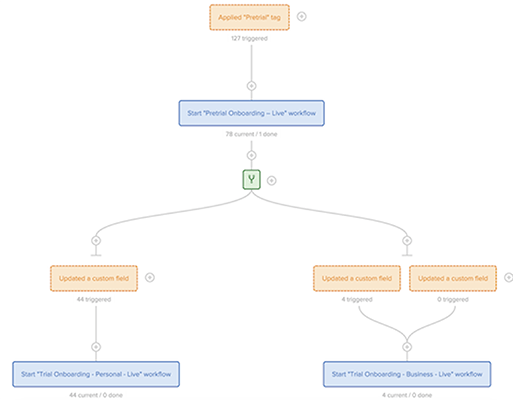
Click the image to go to source
Audience segmentation and email personalization
Segmentation and personalization allow you to send the right emails to the right people at the right time. Make sure the platform you choose has these features as they heavily increase the effectiveness of your email marketing campaigns. We will expand on them later.
Designer and preview tools
Designer and preview tools assist you in generating revenue and making your email campaigns visually stunning. Thanks to them, you are able to create appealing emails and check how they are displayed. It will help you increase conversions and ROI as well as boost engagement.
Pricing
Last but not least, you should also consider pricing. There are many affordable email marketing platforms that offer basic free-of-charge plans with a limited number of subscribers or emails sent per month. They are usually a good start but if you want to truly deploy your email marketing strategy, you may also need more advanced features that come with paid plans. Therefore, you should try to strike the right balance between the costs and the platform features.
Creating an email list
If you are about to build an email list from scratch, you should:
- add a neat online signup form on your landing page (created with a top-notch landing page builder) or a website. If you provide visitors with an incentive for subscribing – such as a free ebook, access to gated content or free coupons, you have high chances of persuading them to convert,
- invite your social media audience and existing customers to sign up – they have already trusted you so they should be willing to do this. It is important to nurture your relationship with them and emails can be helpful in this regard.
What you shouldn’t do is purchase a list of contacts. In email marketing, relationship building and nurturing are the most crucial, and sending messages to people who haven’t had any previous experience with your business will probably yield fruitless results.
Once you collect contacts, you should divide your subscribers into separate lists based on specific characteristics that will allow you to send out highly personalized email messages.
Segmenting audience
According to Gleanster – 78% of marketers say email segmentation is “the marketing automation feature they cannot live without“.
Audience segmentation is the practice of splitting your email list into groups or segments in order to deliver unique and more tailored messages.
Audience dividing allows you to provide your leads with better customer experience and generate a significantly higher uplift from your e mail marketing campaigns – segmented campaigns may have increase revenue up to 760% (according to DMA).
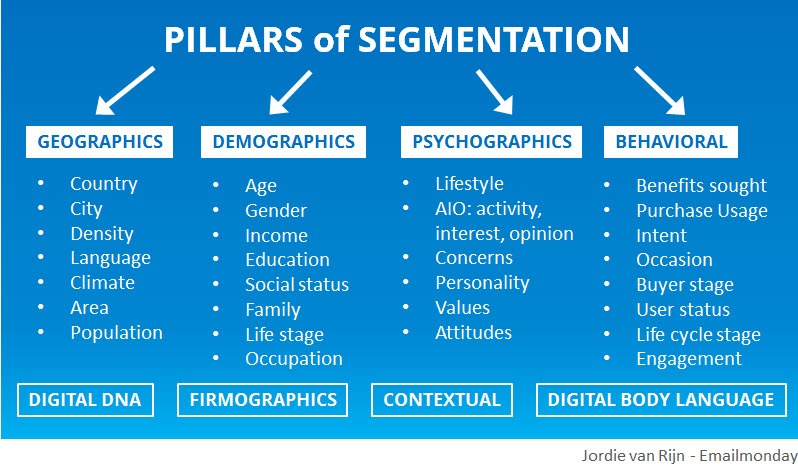
Source: emailmonday (click the image to view)
There are numerous methods of audience segmentation. You can segment your audience based on their geographics, demographics, psychographics or behavioral features.
Nevertheless, the best way of doing it is to combine all these features, as it will allow you to create even more relevant and personalized emails. In order to do this, you can segment your audience by buyer personas.
A buyer persona is a characterization of your model customers representing specific personality traits and preferences. In order to create them properly, you need to know who purchases your products or services and how they use them, what are their motivations and concerns.
Revenue from segmented campaigns feature growth of 760%.
Data & Marketing Association
Personalizing emails
Aberdeen study proved that “personalized emails improve click-through rates by an average of 14% and conversions by 10%”.
As already mentioned – once you segment your audience, you are able to deliver highly personalized email content to your target groups.
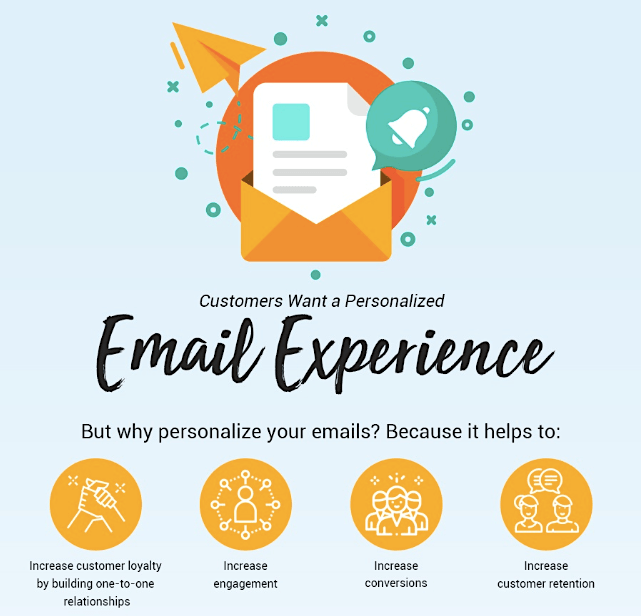
Source: Single Grain (click image to view)
The more personalized emails you send, the better responses you get. Once you implement email personalization, you are able to:
- make customers feel special,
- increase trust among recipients,
- strengthen your relationship with customers,
- increase conversions,
- increase engagement and loyalty,
- increase customer retention.
Try to get into your prospects’ shoes. Would you prefer to get a dry, generic email that is sent to everyone? Or one with your name in the subject line and related to your interests or concerns? I think we both know the answer.
Directing traffic from emails to specific offers
On average, email marketing drives $44 for every $1 spent (according to a Campaign Monitor study) but you need to allow it to do it for your business.
In order to increase interest in your specific offers and increase sales, you can use emails as a tool to convey promotional messages targeted at specific offers.
Once you put out an email about the launch of a new product or adding extra features to an existing one, you can easily direct traffic from emails to offers. And thus – increase sales.
The key point is not to direct recipients to specific offers in a dry, off-putting way, but to create a customer value proposition. Don’t fixate on presenting the features of your products or services but focus on the value that they can enrich customers’ lives with.
You can add information about new offers to your regular newsletter, but you can also prepare a direct email marketing campaign aimed at increasing sales.
In the latter case, you can and send direct emails to those who may be interested in a specific offer. In order to do this properly, you should tap into segmentation and try to customize the offer recommendation that would be the most relevant for a chosen segment or a buyer persona.
All in all, email marketing is a powerful area that has a lot of potential, but it needs to be properly planned and managed. The focal points of using email marketing are to plan your overall email marketing strategy and set up goals you want to achieve with it.
Once you have done it, you are aware of the features you need and that allows you to choose the most appropriate email marketing platform, create an email list, segment it, personalize your emails, present offers in the most appealing way and improve your business performance based on building long-lasting relationships with your customers.





